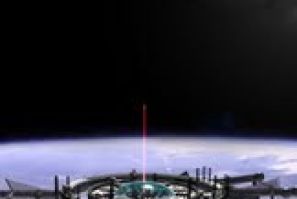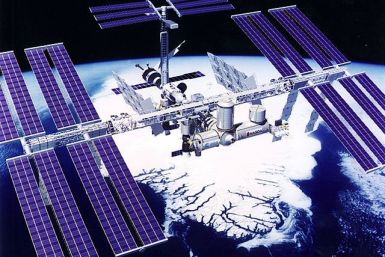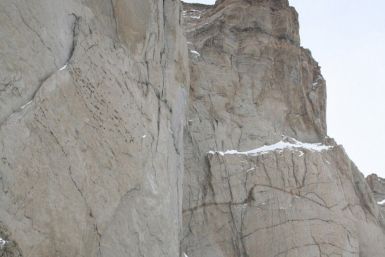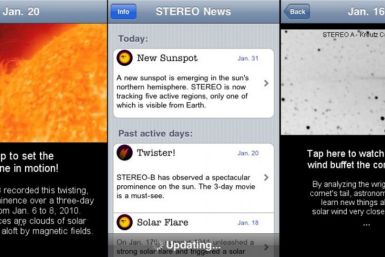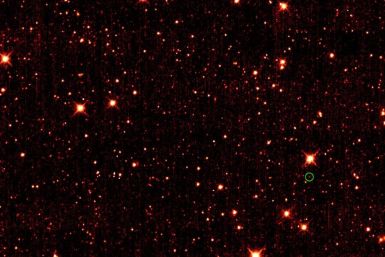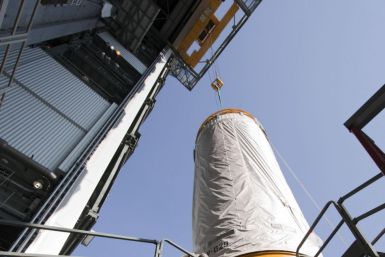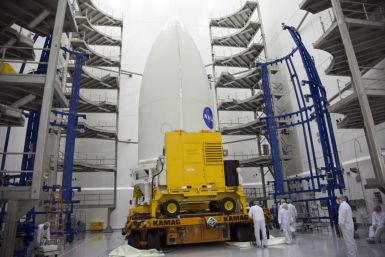The Russian Federal space agency has retracted a decision to sink the International Space Station (ISS) in the Pacific Ocean, after an international uproar over the plan.
The former NASA astronaut will be discharged with "other than honorable" status.
Asteroid 2010 TK7 was discovered by NEOWISE, the asteroid-hunting section of NASA's WISE mission. It was confirmed as the first Earth Trojan after follow up observations with the Canada-France-Hawaii Telescope on Mauna Kea in Hawaii.
Global warming proponents can catch up on the sleep they lost worrying about the planet getting hotter with each passing day. A NASA study which analyzes satellite data from the years 2000 through 2011, published in the peer-reviewed science journal Remote Sensing, reports that Earth's atmosphere is allowing far more heat to be released into space than global warming proponents' computer models have predicted.
The Russian space agency's deputy head Vitaly Davydov?s comments forced Russia?s space agency to back off from an international outcry on Thursday.
Melting ice sheets of Greenland have been a cause of concern for researchers and climate change proponents, as previous studies on the ice sheet behaviors projected Greenland's ice less stable when compared to Antarctica's ice. But a recent study by scientists from the University of Wisconsin-Madison, suggests that we may have got it all wrong.
Two Arizona State University research teams have partnered with NASA's Johnson Space Center to strengthen the realms of space microbiology.
All cool images of NASA at your fingertips
NASA scientists believe that they might have found a lost 1967 Lunar Orbiter 2 spacecraft that took "the picture of the century" before crashing on the moon.
Now that NASA is done with its Space Shuttle Program, the $100 billion International Space Station it worked so hard to build will stay afloat in space until at least 2020, according to comments by Russia's space agency.
The first known Earth Trojan asteroid, called 2010 TK7, has been discovered rotating the sun in Earth's orbit.
NASA has big plans for 3D printers as they look to move beyond low earth orbit. 3D printers have the ability to create spare parts or tools on the spot in zero gravity or on other planets.
Space Exploration Technologies, a privately owned firm developing a space taxi with U.S.-government backing, plans to launch its second test capsule on November 30 and send it all the way to the International Space Station, a company manager said on Thursday.
NASA's Juno probe is heading to Jupiter to study how much water the planet holds, what triggers its vast magnetic fields, and whether a solid core lies beneath its dense, hot atmosphere. In the process NASA hopes to uncover clues to the origins of planet earth.
Astronomers have discovered a Trojan asteroid, which is orbiting the Sun along the same path as the Earth.
The International Space Station may sink into the Pacific ocean in 2020.
Trojan asteroid shares the same orbit as Earth. Will it come in contact with Earth anytime soon?
'Psychology of Space Exploration' & 'Cosmos and Culture: Cultural Evolution in a Cosmic Context'
NASA's Juno Spacecraft is getting ready to embark on its journey to Jupiter, where scientists hope it will bring further understanding to solar system's beginnings.
Trojan asteroids share orbits with other planets in our Solar System to include Neptune, Mars and Jupiter. Two of Saturn's moons share orbits with Trojans, according to NASA.
A robotic probe, Juno, was hoisted onto an unmanned Atlas 5 rocket at Cape Canaveral Air Force Station on Wednesday in preparation for a launch into the heart of Jupiter. The Juno probe is scheduled to spend a year cycling inside Jupiter's deadly radiation belts to learn how much water the planet holds, what triggers its vast magnetic fields, and whether a solid core lies beneath its dense, hot atmosphere.
NASA's Juno Spacecraft was secured to its rocket on Wednesday morning, ready to embark on its journey to Jupiter.



